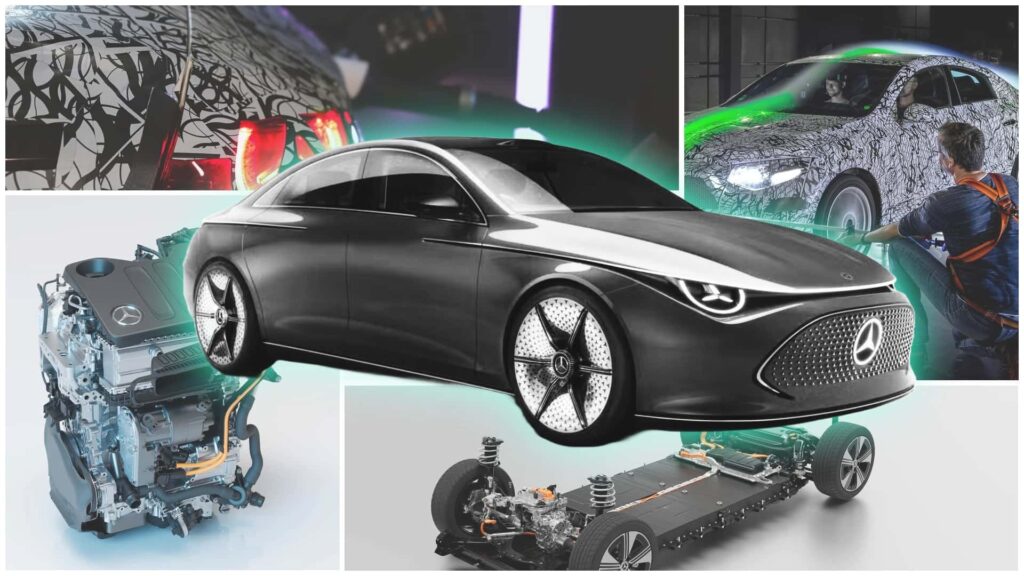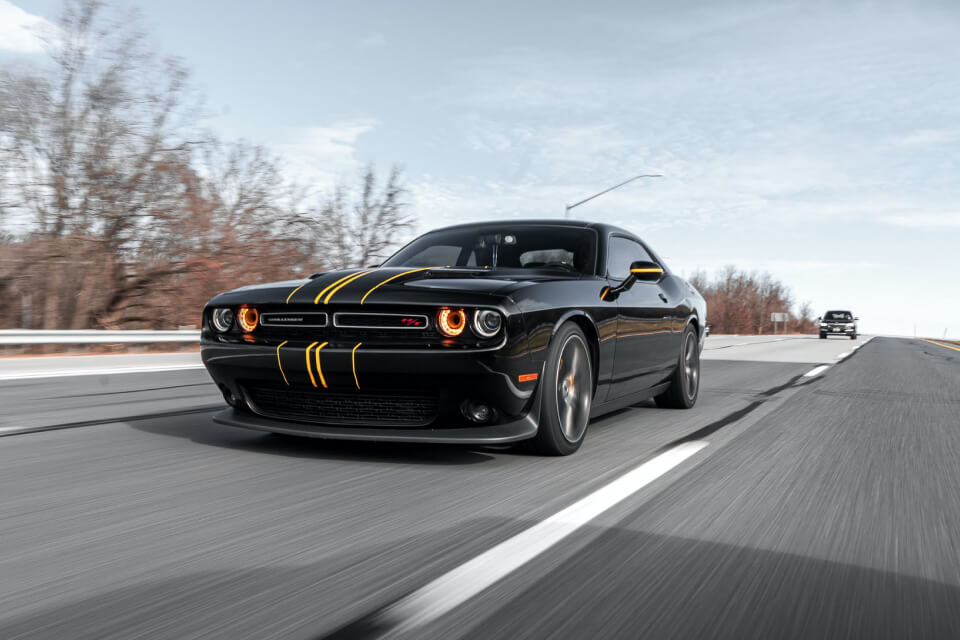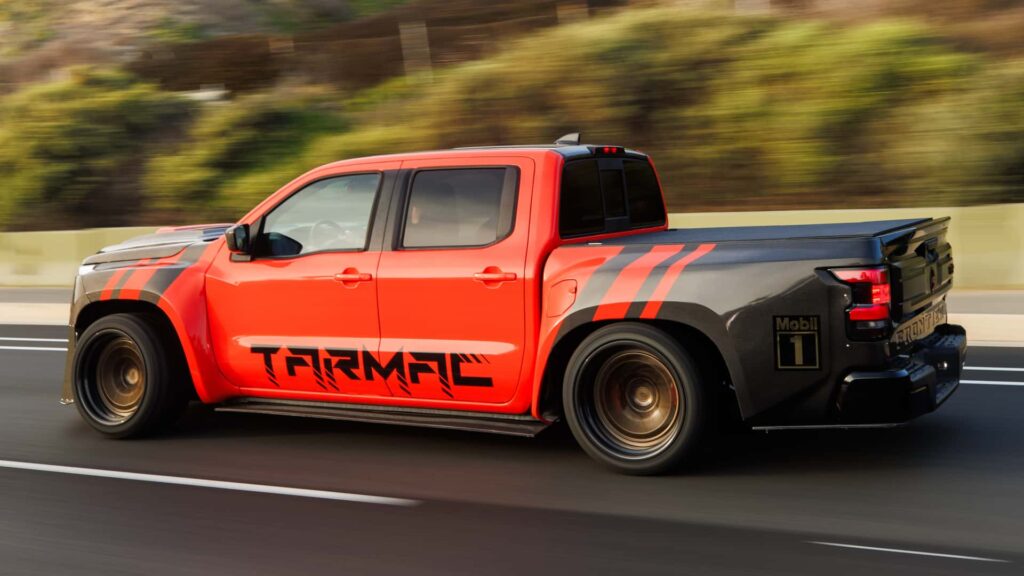
- Mercedes hopes that 800 volts, 320 kW charging and remarkable efficiency will make the CLA a hit with electric sedan buyers.
- It will also be available as a non-plug-in hybrid that promises diesel-like levels of efficiency.
- Mercedes plans to launch four models on the MMA platform including a seven-seater crossover.
The last Mercedes-Benz CLA-Class was a handsome, aerodynamic front- and all-wheel-drive sedan aimed at bringing new customers to the Silver Arrow brand with an affordable price tag and efficient four-cylinder engines. You probably wouldn’t say that it lit the world on fire, however. That’s why the arrival of a new CLA-Class may not sound like that big a deal, but this time around, it’s more important than you may initially think.
After flying to Germany to look at how Mercedes created and tested the ultra-efficient new CLA, I would even go so far as to say the CLA’s electrified rebirth could become a modern-day W201 (190)—something that hits reset on what this company is capable of. It’s that important, and a lot has been poured into its development.
This time around, the CLA comes in all-electric or hybrid form—but not as a plug-in hybrid. It will have a Tesla-style North American Charging Standard (NACS) plug and a Combined Charging System (CCS) one for maximum flexibility. It aims for nothing less than the Lucid Air in terms of EV efficiency. And the hybrid system alone is a fascinating, high-powered piece of kit.
Mercedes needs the CLA to succeed to ensure the brand has a future, as things have dramatically changed in the last 10 years. Like all established automakers from the Western hemisphere, Mercedes’ position is under threat from Chinese carmakers, which are advancing at an unprecedented rate and are now looking to expand sales of their increasingly talented and desirable cars into the West. Tariffs may not be enough to hold them back.
While in Stuttgart last week, I couldn’t help but notice how many Nio, BYD and Lynk & Co plug-ins I saw in the city, which is home to both Mercedes-Benz and Porsche. There are still plenty of cars from these Swabian brands since the locals are fiercely loyal to them, but I was still surprised by how many cars from China I saw.
Mercedes also needs the help. Sales of its EQ-branded EVs have not been fantastic as buyers failed to warm up to the soap bar-like styling; indeed, rival BMW seems to have taken the win for round one. But Mercedes says the CLA is proof that it’s far from done with forward-thinking electric cars.
And even on its home turf, Chinese cars are starting to gain a foothold, which is why it appears Mercedes has pulled out all the stops to make the CLA (and other vehicles built on its modular MMA platform) class-leading. It’s got great range and efficiency, and with a rear-wheel-drive-biased electric powertrain, it should be pretty sweet to drive too.
The Platform Brings More Than Just A Sedan
The CLA sedan will launch next year, and it will soon be joined by a shooting brake wagon variant that’s sadly not coming to the United States. Two crossovers will follow, which will serve as replacements for today’s EQA and EQB, so one of them will likely be a seven-seater.
The MMA platform was designed to be scalable and modular, so it will likely underpin more models in the future, some of them bigger than what we currently know about. Mercedes is known to be working on an electric C-Class (the next step up from the CLA in the Mercedes sedan hierarchy), which is coming in 2026.
Photo by: Mercedes-Benz
However, even if Mercedes says it could go even bigger with MMA-based vehicles, the electric C-Class (and the electric GLC) won’t use it. Those instead will be built on another bespoke EV architecture called MB.EA. This was meant to replace the EVA2 platform used in the EQE and EQS, but new reports suggest the two platforms could coexist for a few more years.
With the AMG-EA platform that will be exclusive to AMG models, this will bring Mercedes’ total number of dedicated EV platforms to four.
Pure Electric CLA
The MMA platform, short for Mercedes Modular Architecture, is the key to the CLA, and it allows for both electric and hybrid powertrains. Mercedes isn’t planning to make plug-in hybrids on this platform, arguing that giving buyers two choices is enough.
This seems like a smart choice because while PHEVs are great on paper and have certain specific use cases where they excel, using them right requires regular charging, and that’s something many owners just aren’t ready to commit to.
Photo by: Mercedes-Benz
With an 800-volt architecture, the MMA platform has a peak charging power of 320 kilowatts in vehicles equipped with NMC batteries. They can add 186 miles (320 km) of range in just 10 minutes if you begin charging at around 10% after having preconditioned the battery on the way to the charger. Mercedes says the 10 to 80% charging dash can be completed in just 22 minutes.
Thanks to having both CCS and NACS charging sockets, CLA EV owners will have a choice of plugging either into a Tesla Supercharger network or any DC fast charger.
The 268-horsepower rear drive unit will include a permanent magnet synchronous (PSM) motor and a two-speed transmission, similar to the one Porsche has on the Taycan. It improves elasticity, allowing for both improved acceleration and higher efficiency at high speeds.
Dual-motor CLA 4Matics get an additional smaller drive unit powering the front axle through a single-speed reduction gear mechanism. It also runs a PSM and has a peak output of 107 hp, pushing the total power output north of 300 hp—the combined power figure hasn’t been released yet. Both motors can be decoupled, allowing the car to coast freely helping boost efficiency in certain situations.
With both motors engaged, the CLA EV will be able to regenerate up to 200 kW of energy under deceleration.
The big-battery CLA, which has 85 kilowatt-hours of usable capacity, has up to 466 miles (750 km) of WLTP range. The more affordable variant will feature a 58-kWh LFP battery pack that should still get an official range rating of around 310 miles (500 km) WLTP. Mercedes will pair the base single-motor rear-wheel-drive CLA with this smaller battery, which should lower its weight and keep the efficiency high.
The charging power for cars running LFP batteries will be lower, but given that these also have a lower capacity, the difference in charging time shouldn’t be significant.
The Hybrid CLA
Mercedes developed an entirely new four-cylinder engine for the hybrid version of the new CLA and subsequent models built on the platform.
It’s a 1.5-liter four-cylinder called the M252, which is related to Mercedes’ larger 3.0-liter straight-six, the M256, but its focus is purely on efficiency. It meets the stringent new EU7 emissions standard, which will be enforced starting in 2026, which aside from exhaust will also take tire and brake emissions into account.
The new M252 uses up 17% less space than the 2.0-liter engine from today’s CLA, and because its electric motor is in the gearbox, it doesn’t have an integrated starter generator like the current mild hybrid model. Powering the car’s 48-volt hybrid system is a small, 1.3 kWh battery located under the driver’s seat.
The hybrid CLA will be available with three power outputs and either front- or all-wheel drive. The power levels are 134, 160 and 187 hp with respective torque values of 147 lb-ft (200 Nm), 184 lb-ft (250 Nm) and 221 lb-ft (300 Nm). All feature the same eight-speed dual-clutch transmission with a 27 hp motor built-in, which allows for electric sailing (basically turning off the combustion engine and driving only on electricity) at speeds of up to 62 mph (100 km/h).
Mercedes stopped short of providing an efficiency rating for the hybrid, but we did hear them mentioning their aim to get it to have diesel-like consumption.
What’s Next?
8
We’re looking forward to seeing more soon, including the final production design. The CLA-Class is due in late 2025 as a 2026 model. When it does debut, it’ll do for Mercedes’ EVs what the EQ cars so far have not—all while offering flexibility with a very clever hybrid version as well.
Will it be a success when it makes its U.S. debut? We’ll find out soon enough.


